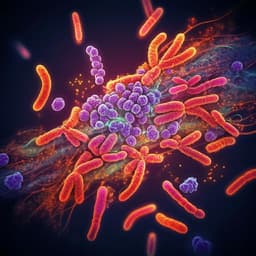
Humanities
Poe, insanity, and containing the feminine monstrous
T. Hayes
Discover how Edgar Allan Poe's tumultuous relationships with women shaped his portrayal of the feminine monstrous in his stories. This research by Tracy Hayes delves into the complexities of unrestrained womanhood and its implications for masculinity.
Playback language: English
Introduction
Edgar Allan Poe's life was marked by the loss of numerous significant women, each death compounding his morbid association of beauty with mortality and betrayal. His troubled mental state, described variously as sadomasochistic, alcoholic, and manic depressive by biographers, undoubtedly influenced his recurring themes. However, this essay argues that Poe's personal experiences of feminine abandonment significantly shaped his fictional treatment of female characters. A common thread in his stories is the conflation of beauty and death, with beautiful women frequently portrayed as both victims and agents of destruction, existing as idealized images within the male narrators' minds. This introduction establishes the backdrop of Poe's life and its impact on his writing, highlighting the crucial role of feminine abandonment and the subsequent creative expression within his works. The essay will focus on three specific tales: "Berenice," "Ligeia," and "The Fall of the House of Usher", where the author explores how Poe uses these stories to confront his anxieties around female agency and control, ultimately attempting to contain the threat of feminine power he perceived in his life and projected onto his female characters.
Literature Review
The essay draws upon various scholarly interpretations of Poe's works. Julian Symons's analysis emphasizes the tenuous survival chances of beautiful women in Poe's fiction, viewing them as both victims and catalysts for destruction, existing primarily in the male narrators' minds. Stephen Amos's discussion of Eros and Thanatos, the love and death drives, helps to understand the central forces driving Poe's characters. Karen Weekes highlights Poe's pattern of losing nurturing young women, emphasizing the connection between Eros and Thanatos in his life and work. Peter Ackroyd's biographical insights explore Poe's selection of frail women and his perception of relationships as ideal or spiritual. These perspectives form the foundation for analyzing Poe's literary depiction of women, specifically the "feminine monstrous" as conceptualized by Barbara Creed. Creed's work on the monstrous-feminine, including the categories of "woman as life-in-death" and "woman as the deadly femme castratrice," provides a critical framework for interpreting Poe's characterizations. Further, the essay incorporates Freud's concept of the *unheimlich* (uncanny) to understand the return of repressed anxieties and desires within Poe's narratives. Finally, David Punter and Glennis Byron's work on the Gothic tradition, especially their analysis of monsters as both warnings (monere) and demonstrations (monstrare), provides a valuable lens through which to view Poe's female characters.
Methodology
This essay employs a close reading approach to analyze three short stories by Edgar Allan Poe: "Berenice" (1835), "Ligeia" (1838), and "The Fall of the House of Usher" (1839). The methodology involves a detailed examination of the texts, focusing on the characterization of the female figures and the psychological states of the male narrators. The analysis draws on established critical theories, including those of Barbara Creed on the monstrous-feminine, Sigmund Freud on the uncanny, and Julia Kristeva on the abject. The essay explores the recurring motifs of obsession, monomania, female incarceration and objectification, and the containment of the "feminine monstrous." Specific textual passages are analyzed to illustrate how Poe uses language and imagery to create unsettling and ambiguous representations of female characters. The use of symbolism and recurring motifs are highlighted and their potential meanings and implications are examined. The biographical details of Poe's life are woven into the analysis to shed light on the possible psychological motivations underlying his literary creations. Furthermore, the analysis also places these stories in the broader context of Gothic literature, drawing on scholarly interpretations and discussions of similar themes and representations in the works of other authors. By combining close reading with theoretical frameworks, this essay aims to provide a comprehensive and nuanced understanding of Poe's complex and unsettling depictions of women and the psychology of his male narrators.
Key Findings
The essay identifies recurring patterns in Poe's portrayal of women in "Berenice," "Ligeia," and "The Fall of the House of Usher." In "Berenice," the narrator's obsession with his cousin's teeth is interpreted as a manifestation of anxieties surrounding female sexuality and the threat of castration. The act of extracting Berenice's teeth symbolizes a grotesque attempt to contain and neutralize this threat. In "Ligeia," the narrator's obsessive love for his first wife leads to her death, and her spirit's return in the body of his second wife represents an unsettling metempsychosis. Ligeia's powerful intellect and presence are juxtaposed with the diminished role of the second wife, Rowena, who serves as a vessel for Ligeia's return. This highlights Poe's themes of obsession, transcendence, and the blurring of boundaries between life and death. In "The Fall of the House of Usher," Madeline Usher embodies both the warning (monere) and demonstration (monstrare) of impending doom, a powerful representation of the "feminine monstrous." Her return from the tomb signifies the failure to contain the repressed feminine. The essay argues that these female characters represent a masculine projection of womanhood unrestrained and unsuccessfully repressed by their male counterparts, returning in an act of *unheimliche* consummation. The analysis of the stories shows how Poe's male narrators attempt to control and contain the perceived threat of female power through various methods: physical acts of violence (Berenice), spiritual manipulation (Ligeia), and ritualistic confinement (Madeline). However, these attempts consistently fail, leading to the demise of the male narrators and the breakdown of their worlds. The essay also examines the interplay between Eros and Thanatos in Poe's fiction, noting that the beauty of his female characters is inextricably linked to their mortality. This reflects Poe's own life experiences and the psychological impact of the loss of significant women in his life. The essay's close readings illustrate the complex interplay of obsession, repression, and the uncanny in Poe's narratives, highlighting his exploration of themes related to gender, power, and the human psyche.
Discussion
This essay demonstrates how Poe's personal experiences and psychological struggles significantly shaped his fictional representations of women. By analyzing his narratives through the lens of feminist critical theory and psychoanalysis, the study sheds new light on the anxieties and desires that drive his male narrators. The repeated patterns of female objectification, obsessive love, and violent attempts at control reveal a deep-seated fear of female power and agency. The failure of these attempts to contain the "feminine monstrous" suggests that Poe grappled with the limitations of patriarchal structures and the impossibility of fully controlling or repressing the female Other. The essay's findings contribute to the ongoing scholarly conversation about Poe's work, offering a nuanced understanding of his thematic concerns and literary techniques. The study’s focus on the uncanny aspects of Poe’s stories highlights the enduring power of his works to unsettle and provoke readers. By interpreting these narratives within the context of Poe's biography and relevant critical theories, the study illuminates the psychological complexities and anxieties underlying his fictional creations.
Conclusion
This essay demonstrates how Poe’s fiction, particularly in "Berenice," "Ligeia," and "The Fall of the House of Usher," functions as a site for both the projection and attempted containment of his anxieties surrounding feminine power. Through close readings informed by psychoanalytic and feminist critical theory, the essay illuminates the intricate ways in which Poe's male narrators seek to control and repress the "feminine monstrous." The recurring failure of these attempts suggests a deeper exploration of the limitations of patriarchal structures and the enduring power of the repressed female Other. Future research might explore the influence of specific cultural and historical contexts on Poe's representations of women or examine the reception and interpretation of his works across different time periods and cultural contexts. Further research could also explore the connections between Poe's treatment of the feminine monstrous and his broader engagement with themes of death, decay, and the supernatural.
Limitations
This essay focuses primarily on three of Poe's short stories, limiting its scope to a selective sample of his works. While these stories are rich in thematic resonance, a broader analysis of Poe's complete oeuvre might reveal a more complex and nuanced picture of his literary engagement with gender and power dynamics. Furthermore, the essay relies heavily on secondary sources, which, while valuable, represent interpretations and perspectives shaped by their own contexts and biases. Direct engagement with primary sources and a comparative analysis of Poe's work with that of his contemporaries could further enrich the analysis. Finally, the essay primarily focuses on the psychological motivations of Poe's male narrators, which while offering insightful interpretations, might neglect other important aspects of the stories. A future study could consider the agency and subjectivity of the female characters in greater depth.
Related Publications
Explore these studies to deepen your understanding of the subject.







